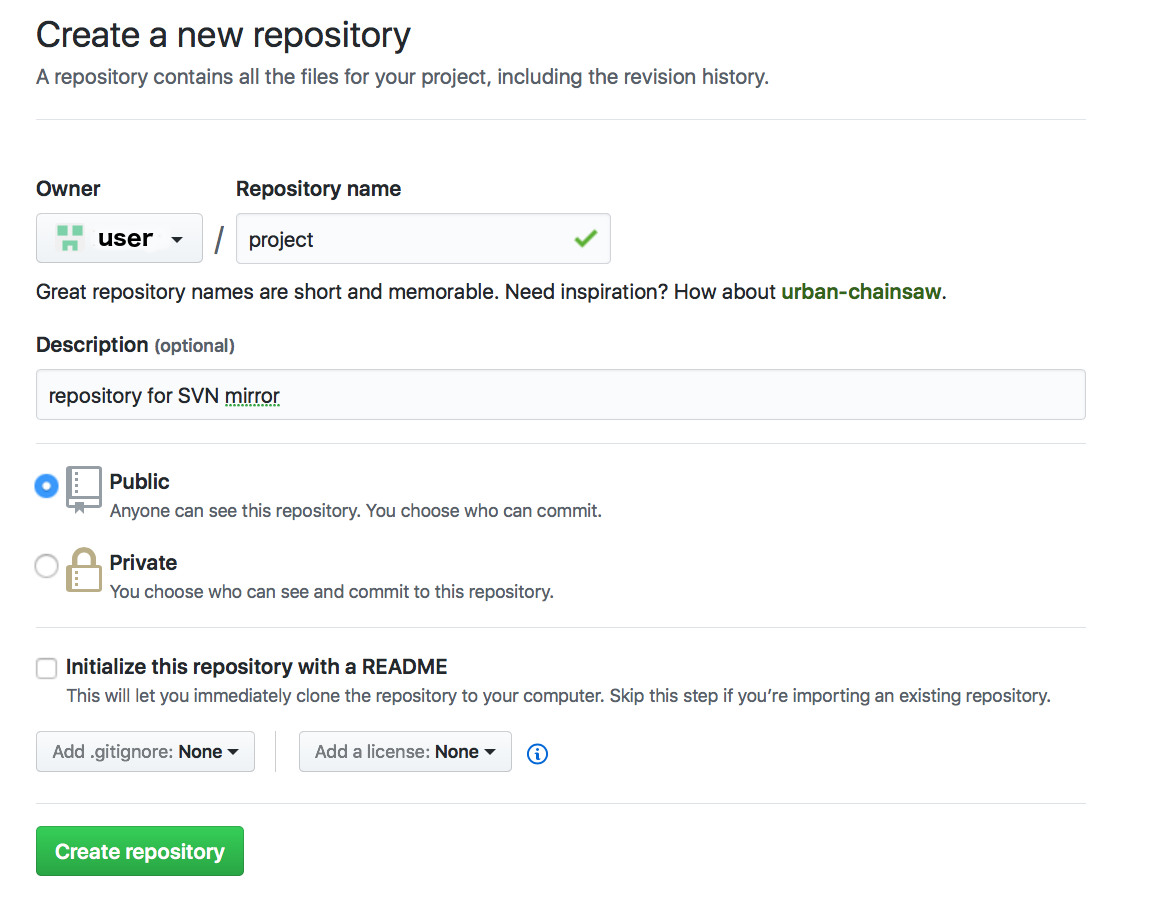- Install SubGit tool according to the Installation guide.
- Configure GitHub
- login to GitHub and create a new repository:
- login to GitHub and create a new repository:
- Configure local repository:
Run this command on behalf of the same user you use to serve Git repository:
$ subgit configure --layout auto --trunk trunk SVN_URL GIT_REPO
where
SVN_URL– URL to the SVN project.GIT_REPO– a path to the new Git repository where data from the SVN project will be imported to.
Specify authors mapping
Configure authors mapping in default authors mapping file:GIT_REPOS/subgit/authors.txt
Or change
core.authorsoption so that it points to the global authors mapping file.Find more details about authors mapping in Authors mapping article.
Import data into local Git repository by the command:
$ subgit import GIT_REPO
- Sync local Git repository with GitHub:
step into newly created local Git repository
$ cd GIT_REPO
add a remote to the local Git repository:
$ git remote add github GITHUB_REPO
where
GITHUB_REPO– GitHub project URL.
push local repository content into GitHub repository:
When the command completed, all the files are on GitHub, so you can clone your GitHub repository and start to work with it:
$ git clone GITHUB_REPO WORK_TREE
where
WORK_TREE– a path to your working copy.GITHUB_REPO– GitHub project URL
License is not needed for import
Note: no license key required for import!
Would you have any assistance, don't hesitate to contact us at support@subgit.com.
